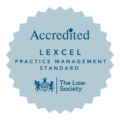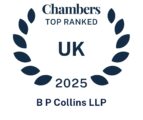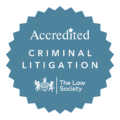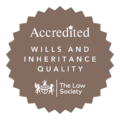Following the Grenfell tragedy, the lack of accountability and penalties in the current system became apparent. The Building Safety Act 2022 (“the BSA”) was introduced to combat this, which resulted in wider reaching and harsher sanctions against those held accountable.
The overarching objective for the introduction of the BSA ultimately being to ensure that High Rise Buildings (”HRBs”) are safe for their residents and others involved.
Liability under the BSA is a complex issue that involves various parties throughout the stages of the building’s life cycle and the ability to enforce is far reaching. B P Collins’ Building Act Safety team explores in more detail.
The Corporate Veil
Most controversially, in certain circumstances the BSA permits the corporate veil to be pierced.
The corporate veil is a longstanding principle whereby a company will be treated as a separate legal entity from its directors, and other companies. The key benefit being that a company will be liable for its own debts and liabilities rather than its directors and shareholders.
Piercing the corporate veil occurs where the limited liability from which directors benefit is lifted or ‘pierced’. This results in a situation where individual directors are liable for their actions and cannot ‘hide behind the company’. Traditionally, it has been very difficult to pierce the corporate veil and is usually reserved for where there is some form of impropriety, such as fraud.
Many developers in the past created companies often referred to as Special Purpose Vehicles (“SPV”) when carrying out new developments. This was in an attempt to avoid liability and mitigate risk.
The introduction of the BSA looks to combat this by making directors and associated companies potentially liable.
We consider some of those circumstances below.
Building Liability Orders
This concept is set out in Section 130 of the BSA. Whilst the BSA mainly focuses on HRBs, Section 130 is not constrained to only these types of buildings, in fact it is not constrained to any one type of building at all.
For example, should a parent company set up an SPV for the purpose of a new development, that parent company may still be accountable for any liabilities of that SPV in accordance with Section 130.
This can be done in one of three circumstances via an application being made to the High Court:
- Under the Defective Premises Act
- Under Section 38 of the Building Act 1984 (prospective – not yet in force)
- As a result of a ‘Building Safety Risk’ – this is defined at Section 62 of the Act as a ‘risk to the safety of people in or about a building arising from; 1) the spread of fire, 2) structural failure or 3) any other prescribed matter.’
Arguably, this third circumstance is the widest reaching of the three making the scope for the passing on of liability very wide.
Relevant Defects
A ‘relevant defect’ will be present in a ‘relevant building’. A relevant building is defined at Section 117 of the BSA as a ‘self-contained building, or self-contained part of a building which contains at least two dwellings and is at least 11 metres high or has at least 5 storeys.
This leads on to a ‘relevant defect’ being defined at Section 120 of the BSA. This definition is purposely very wide; ‘anything done (or not done) or anything used (or not used) in connection with relevant works and causes a building safety risk. Please see Sections 120 (3) and (5) for the definitions of ‘relevant works’ and ‘building safety risk’.
A landlord tasked with the remediation of ‘relevant defects’ is liable for the cost of any necessary remedial works to the building.
Liability can also be extended to those partnerships/companies ‘associated’ with a landlord if they are deemed to be the true party responsible for the works which lead to the defect.
Section 121 of the BSA sets of a far-reaching definition of an ‘associated person’. This section states that a partnership or ‘body corporate’ is associated with another person where:
- Where the landlord is a ‘body corporate’ (a company), an associated person includes any person who was a director of the company at any time in the five-year period prior, ending on 14 February 2022. A company would be deemed as being associated with another company should; a) at any time in the five-year period as above a person was a director of both of them; or b) on 14 February 2022, one of them controlled the other or a third company controlled them both.
- A partnership is associated with any person who was a partner in the partnership (except a limited partner) at any time in the period of five years prior, ending at the 14 February 2022.
- Where a person’s interest in a ‘relevant building’ was held on trust during the ‘qualifying time’, any partnership or company which was a beneficiary to that trust is to be regarded as ‘associated’.
The ‘qualifying time is defined as ‘at the beginning of 14 February 2022’. The ‘relevant period’ is ‘the period of 30 years ending on 28 June 2022’ (28 June 1992 – 28 June 2022).
As above, this definition has purposely been set very wide in an attempt to ensure that liability is established where truly owed, again, circumventing the corporate veil.
Remediation Orders and Remediation Contribution Orders
Where it has been established that a landlord is to carry out remediation works but fails to do so, an interested party may make an application to the First-Tier Tribunal seeking a ‘remediation order’ against the landlord, compelling them to carry out the works in accordance with Section 123 of the BSA.
The Act goes further to state at Section 124 that a ‘remediation contribution order’ can be made against those ‘associated’ (please see above definition) with a landlord or developer. These can be made against those it considers ‘just and equitable’ and can include:
- A landlord under a lease of the relevant building or any part of it,
- A person who was such a landlord at the qualifying time (at the beginning of 14 February 2022);
- A developer in relation to the relevant building, or
- A person associated with an individual within any of paragraphs 1 to 3 above.
Insolvency Orders
Where a company which is landlord under a lease of a ‘relevant building’ (or any part of it) is in the course of winding up, an application can be made requesting that the company or partnership ‘associated’ (as above) with the dissolving company make contributions towards the liabilities of the company being wound up in respect of remedying any ‘relevant defects’. (Section 130 of the BSA).
This can only be applied for by an insolvency practitioner who is winding up the company.
Liability of ‘Officers’
Where an offence is committed under Part 2 or Part 4 of the BSA by a company, Section 161 of the Act extends liability past the company and on to the company’s officers.
Section 161 sets out the circumstances where the officers of a company may be held liable.
For such liability to be established the offence committed must be:
“(a) committed with the consent or connivance of any director, manager, secretary or other similar officer of the company, or any person who was purporting to act in any such capacity, or
(b)is attributable to any neglect on the part of any such person.”
A Director is defined at Section 161(2) as ‘in relation to a body corporate whose affairs are managed by its members, director will mean a member of the body corporate.”
‘Manager’ and ‘other similar officer’ are not defined within the BSA which leaves these open to a potentially wide interpretation. As more and more matters surrounding the BSA are litigated, we will no doubt see an interpretation of these terms develop over time.
Conclusion
There are multiple ways in which the provisions of the BSA can be enforced and we are yet to see the practical implications of the new regime in practice. At B P Collins we are advising our clients on the BSA from all angles, and we are also liaising with specialist Counsel to get a wider view on interpretation and how matters are likely to progress.
As such, we are in a position to help developers, directors, landlords and tenants navigate through this new and developing legislation. Please contact our Building Safety Act team if you have an enquiry at enquiries@bpcollins.co.uk or call 01753 889995.














